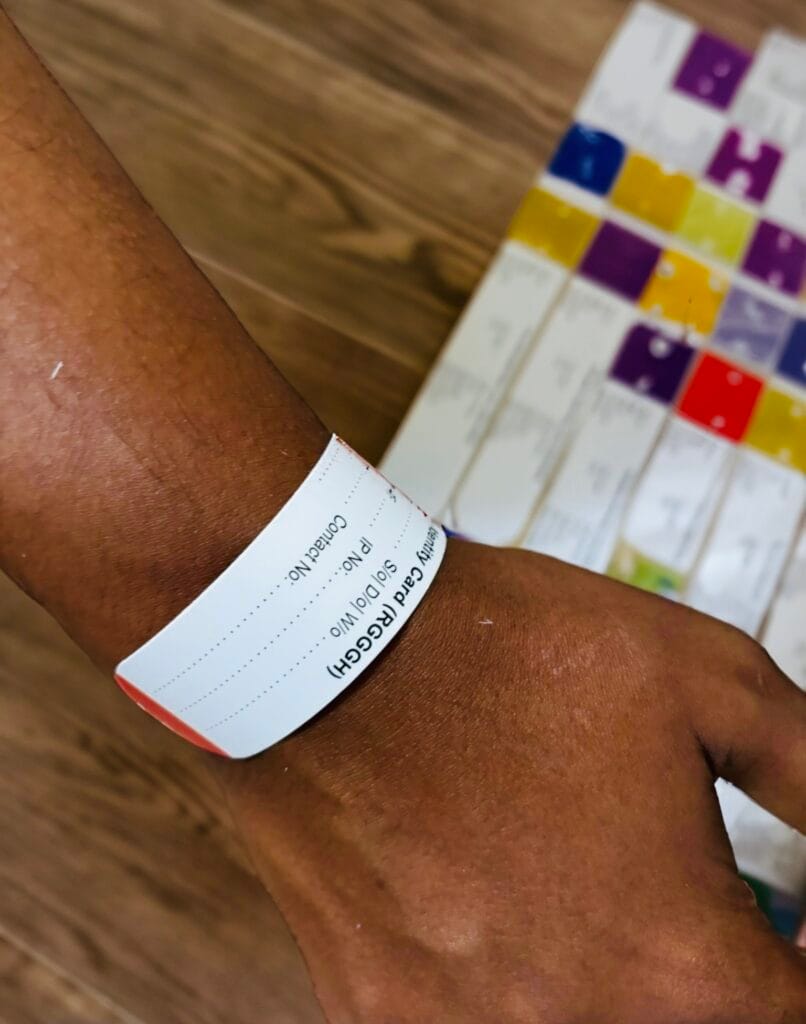The Function of Patient Identification Band in Ensuring Accurate Medical Records
The Function of Patient Identification Band in Ensuring Accurate Medical Records
Blog Article
Simplifying Individual Care With Efficient Recognition Bands
The execution of effective identification bands is a pivotal element in enhancing patient treatment within medical care setups. As the landscape of individual identification evolves, one must consider the ramifications of these systems on overall healthcare delivery and person outcomes.
Relevance of Person Recognition
Guaranteeing accurate person recognition is important in healthcare settings, as it directly affects the security and high quality of care supplied. Misidentification can result in major errors, consisting of providing the wrong drug, performing inaccurate procedures, or miscommunicating vital individual information. Such errors not only jeopardize person security yet can also result in lawful ramifications and reduced rely on health care systems.
Reliable client recognition is fundamental to establishing a safe environment where clients get appropriate and individualized care. It helps with the precise documentation of clinical backgrounds, allergic reactions, and therapy plans, guaranteeing that doctor have accessibility to crucial info in all times. Robust recognition procedures aid enhance interaction amongst medical team, enhancing partnership and decreasing the danger of mistakes.

Kinds of Identification Bands
Recognition bands play an important role in maintaining precise patient records and boosting security within healthcare settings. Various sorts of recognition bands are made use of to accommodate the specific requirements and needs of different person populations.

An additional type is the ankle joint band, which is especially useful for infants and infants, making certain that identification continues to be intact even throughout care procedures. Specialized bands, such as those for allergy alerts or drop threat indicators, supply additional layers of safety and security by drawing prompt attention to crucial patient conditions.
Lately, electronic recognition bands have actually gained popularity, incorporating barcodes or RFID innovation that can be scanned to rapidly obtain patient data. These bands streamline workflows and reduce the danger of human mistake throughout person identification procedures.
Benefits of Effective Identification
Efficient identification of clients through making use of identification bands contributes significantly to overall client safety and care high quality. By making certain that each person is properly recognized, healthcare carriers can properly match clinical therapies and treatments to the proper person, reducing the danger of mistakes. This is particularly vital in settings with high patient turn over, where the possibility for misidentification is higher.
Additionally, efficient identification bands enhance interaction amongst medical care teams. Accurate and clear client identification promotes partnership and makes certain that all group members understand an individual's particular requirements and medical history. This interaction is necessary for providing coordinated treatment, specifically in emergency situations where time is essential.

Inevitably, effective identification through making use of identification bands not only safeguards people yet additionally advertises a culture of safety within healthcare facilities (Patient Identification Band). By focusing on exact identification, medical care over at this website companies can boost results and improve the overall person experience
Implementing Recognition Solutions
While the significance of patient recognition is well acknowledged, the implementation of durable identification systems presents a complex obstacle for medical care organizations. Establishing reliable identification systems calls for a comprehensive strategy, incorporating innovation, workers training, and process assimilation.
First, companies must pick ideal recognition innovations, such as barcode scanning, RFID, or biometric systems. Patient Identification Band. These innovations ought to be examined based upon cost, use, and compatibility with existing infrastructure. A pilot program can assist recognize potential problems before full-blown implementation
Following, comprehensive training for personnel is important. All employees should recognize the significance of precise individual identification and be skillful in using the picked technologies. Routine training updates and analyses can reinforce finest techniques and ensure you could try these out ongoing compliance.
Furthermore, medical care organizations must create standardized procedures for patient identification throughout all divisions, boosting and minimizing inconsistencies communication. Normal audits can aid identify gaps in adherence to these procedures.

Eventually, an efficient application of identification systems not just improves client security but also fosters a culture of accountability and persistance within medical care setups, making certain regular and reliable person treatment.
Future Trends in Person Identification
Advancements in technology are readied to revolutionize client identification methods in healthcare setups. The integration of biometric recognition approaches, such as fingerprinting and face acknowledgment, is expected to improve accuracy and security. These technologies can significantly lower the threat of misidentification, making certain that individuals get the appropriate treatments and medications.
Moreover, the execution of blockchain technology for client documents is acquiring traction. This decentralized approach can offer a tamper-proof and secure method for taking care of person identifications, consequently simplifying accessibility to essential info throughout different medical care providers.
One more fad is the enhancing usage of mobile health applications that utilize QR codes for client recognition. These applications allow for real-time updates and simple accessibility to patient data, encouraging health care specialists to make informed decisions promptly.
Additionally, expert system (AI) is positioned to play an essential function in assessing patient identification information, recognizing patterns, and predicting prospective recognition mistakes prior to they take place.
As these technologies develop, they assure not just to improve client click now security yet additionally to improve the total effectiveness of medical care distribution systems. Accepting these innovations will be vital for future-proofing patient care methods.
Final Thought
In conclusion, efficient recognition bands are crucial for enhancing client security and care top quality within medical care settings. By reducing the risks connected with misidentification, these bands help with timely and precise information retrieval, eventually boosting interaction among health care carriers. The execution of durable identification systems not only fosters a society of safety and security however likewise positions medical care establishments to adjust to future trends in patient identification modern technology, making certain optimum results for patients in varied professional atmospheres.
As the landscape of client recognition advances, one need to think about the implications of these systems on total health care delivery and person end results.Efficient patient recognition is essential to establishing a safe and secure setting where individuals receive personalized and ideal treatment. Eventually, prioritizing efficient client identification approaches not only fosters a culture of safety and security yet also adds to enhanced patient results and overall satisfaction with medical care services.
Reliable identification of individuals with the usage of identification bands adds substantially to total patient safety and security and care high quality. The implementation of robust recognition systems not only fosters a society of security yet also settings medical care organizations to adjust to future fads in client recognition modern technology, guaranteeing ideal end results for patients in diverse medical settings.
Report this page